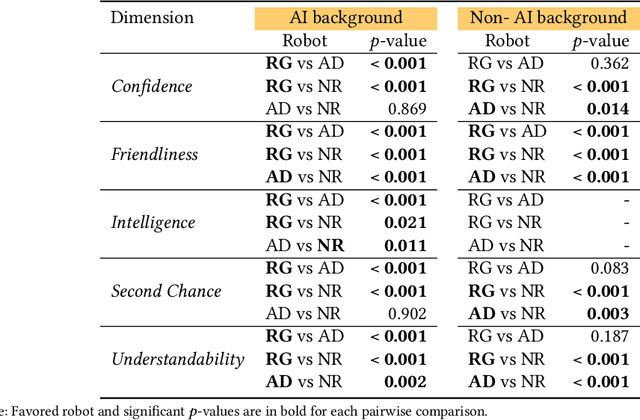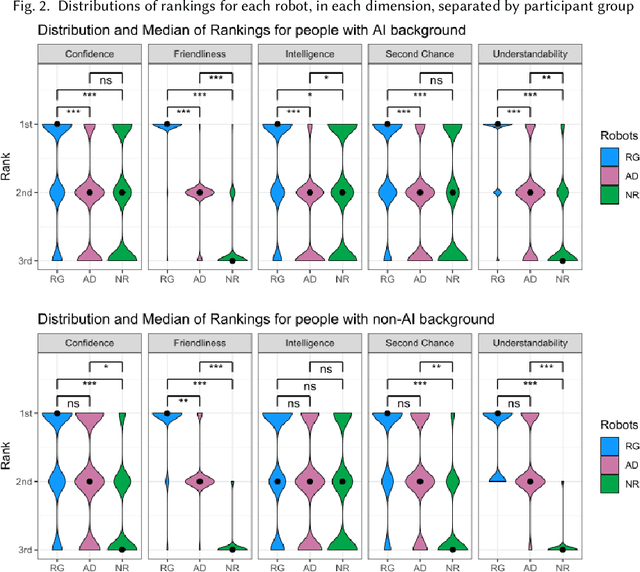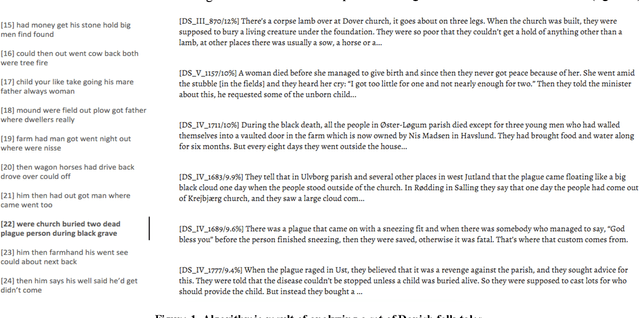Samir Passi
Seamful XAI: Operationalizing Seamful Design in Explainable AI
Nov 12, 2022Abstract:Mistakes in AI systems are inevitable, arising from both technical limitations and sociotechnical gaps. While black-boxing AI systems can make the user experience seamless, hiding the seams risks disempowering users to mitigate fallouts from AI mistakes. While Explainable AI (XAI) has predominantly tackled algorithmic opaqueness, we propose that seamful design can foster Humancentered XAI by strategically revealing sociotechnical and infrastructural mismatches. We introduce the notion of Seamful XAI by (1) conceptually transferring "seams" to the AI context and (2) developing a design process that helps stakeholders design with seams, thereby augmenting explainability and user agency. We explore this process with 43 AI practitioners and users, using a scenario-based co-design activity informed by real-world use cases. We share empirical insights, implications, and critical reflections on how this process can help practitioners anticipate and craft seams in AI, how seamfulness can improve explainability, empower end-users, and facilitate Responsible AI.
The Who in Explainable AI: How AI Background Shapes Perceptions of AI Explanations
Jul 28, 2021



Abstract:Explainability of AI systems is critical for users to take informed actions and hold systems accountable. While "opening the opaque box" is important, understanding who opens the box can govern if the Human-AI interaction is effective. In this paper, we conduct a mixed-methods study of how two different groups of whos--people with and without a background in AI--perceive different types of AI explanations. These groups were chosen to look at how disparities in AI backgrounds can exacerbate the creator-consumer gap. We quantitatively share what the perceptions are along five dimensions: confidence, intelligence, understandability, second chance, and friendliness. Qualitatively, we highlight how the AI background influences each group's interpretations and elucidate why the differences might exist through the lenses of appropriation and cognitive heuristics. We find that (1) both groups had unwarranted faith in numbers, to different extents and for different reasons, (2) each group found explanatory values in different explanations that went beyond the usage we designed them for, and (3) each group had different requirements of what counts as humanlike explanations. Using our findings, we discuss potential negative consequences such as harmful manipulation of user trust and propose design interventions to mitigate them. By bringing conscious awareness to how and why AI backgrounds shape perceptions of potential creators and consumers in XAI, our work takes a formative step in advancing a pluralistic Human-centered Explainable AI discourse.
"From What I see, this makes sense": Seeing meaning in algorithmic results
Feb 21, 2021
Abstract:In this workshop paper, we use an empirical example from our ongoing fieldwork, to showcase the complexity and situatedness of the process of making sense of algorithmic results; i.e. how to evaluate, validate, and contextualize algorithmic outputs. So far, in our research work, we have focused on such sense-making processes in data analytic learning environments such as classrooms and training workshops. Multiple moments in our fieldwork suggest that meaning, in data analytics, is constructed through an iterative and reflexive dialogue between data, code, assumptions, prior knowledge, and algorithmic results. A data analytic result is nothing short of a sociotechnical accomplishment - one in which it is extremely difficult, if not at times impossible, to clearly distinguish between 'human' and 'technical' forms of data analytic work. We conclude this paper with a set of questions that we would like to explore further in this workshop.
Trust in Data Science: Collaboration, Translation, and Accountability in Corporate Data Science Projects
Feb 09, 2020Abstract:The trustworthiness of data science systems in applied and real-world settings emerges from the resolution of specific tensions through situated, pragmatic, and ongoing forms of work. Drawing on research in CSCW, critical data studies, and history and sociology of science, and six months of immersive ethnographic fieldwork with a corporate data science team, we describe four common tensions in applied data science work: (un)equivocal numbers, (counter)intuitive knowledge, (in)credible data, and (in)scrutable models. We show how organizational actors establish and re-negotiate trust under messy and uncertain analytic conditions through practices of skepticism, assessment, and credibility. Highlighting the collaborative and heterogeneous nature of real-world data science, we show how the management of trust in applied corporate data science settings depends not only on pre-processing and quantification, but also on negotiation and translation. We conclude by discussing the implications of our findings for data science research and practice, both within and beyond CSCW.
Data Vision: Learning to See Through Algorithmic Abstraction
Feb 09, 2020



Abstract:Learning to see through data is central to contemporary forms of algorithmic knowledge production. While often represented as a mechanical application of rules, making algorithms work with data requires a great deal of situated work. This paper examines how the often-divergent demands of mechanization and discretion manifest in data analytic learning environments. Drawing on research in CSCW and the social sciences, and ethnographic fieldwork in two data learning environments, we show how an algorithm's application is seen sometimes as a mechanical sequence of rules and at other times as an array of situated decisions. Casting data analytics as a rule-based (rather than rule-bound) practice, we show that effective data vision requires would-be analysts to straddle the competing demands of formal abstraction and empirical contingency. We conclude by discussing how the notion of data vision can help better leverage the role of human work in data analytic learning, research, and practice.
 Add to Chrome
Add to Chrome Add to Firefox
Add to Firefox Add to Edge
Add to Edge